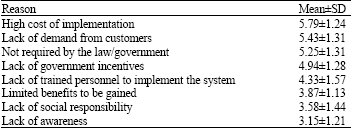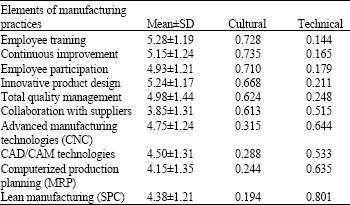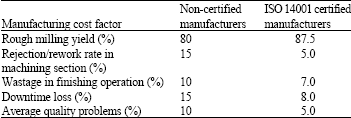Research Article
The Impact of ISO 14001 on Production Management Practices: A Survey of Malaysian Wooden Furniture Manufacturers
Faculty of Forestry, Universiti Putra Malaysia, 43400 UPM, Serdang, Selangor, Malaysia|
K. Wagner
Faculty of Business Studies, Open University Malaysia, Jalan Sultan Ismail, 50480 Kuala Lumpur, Malaysia
S.R. Albakshi
Market Research Company Pte. Ltd. 14, McAlister Drive, 149261, Singapore












